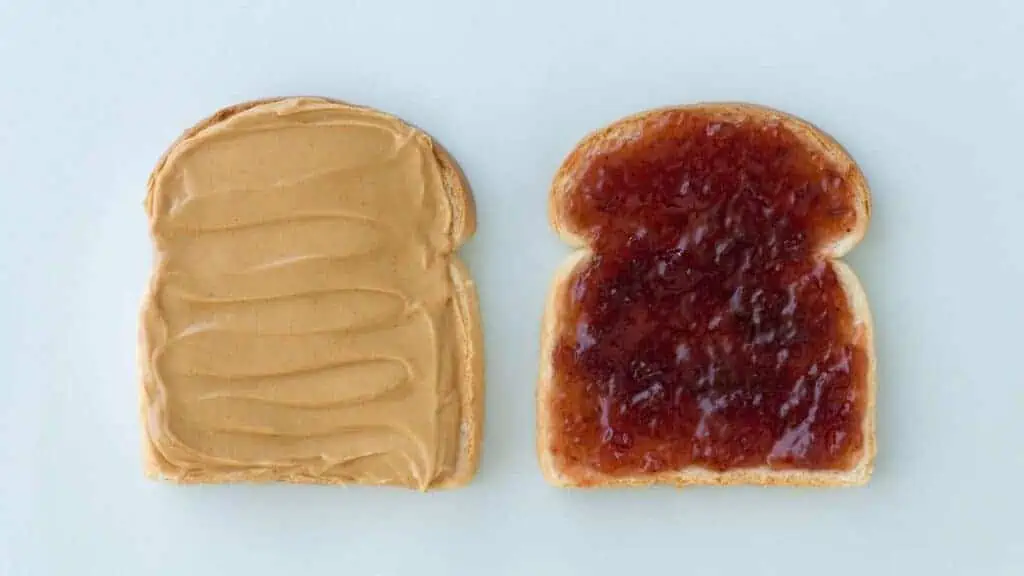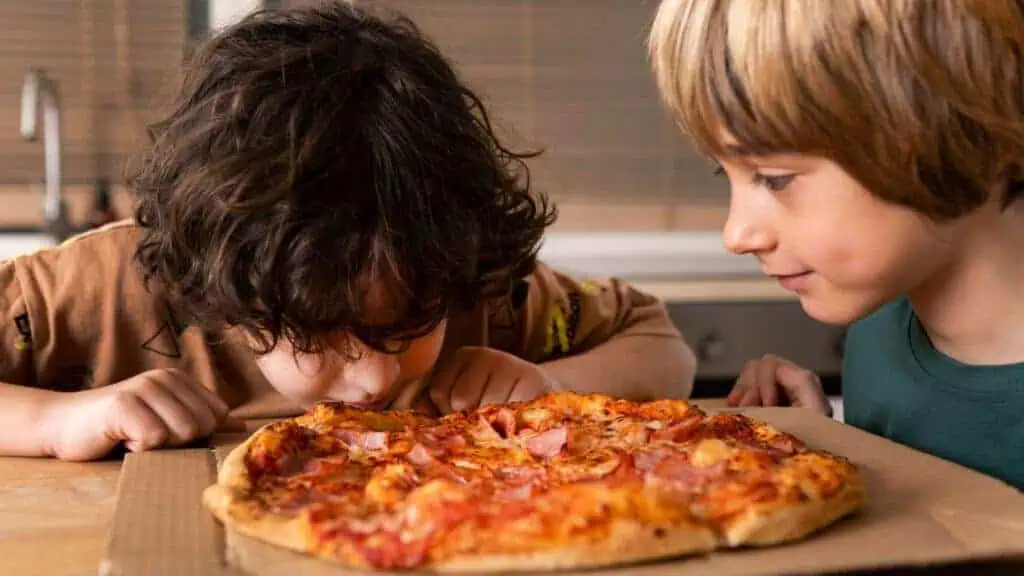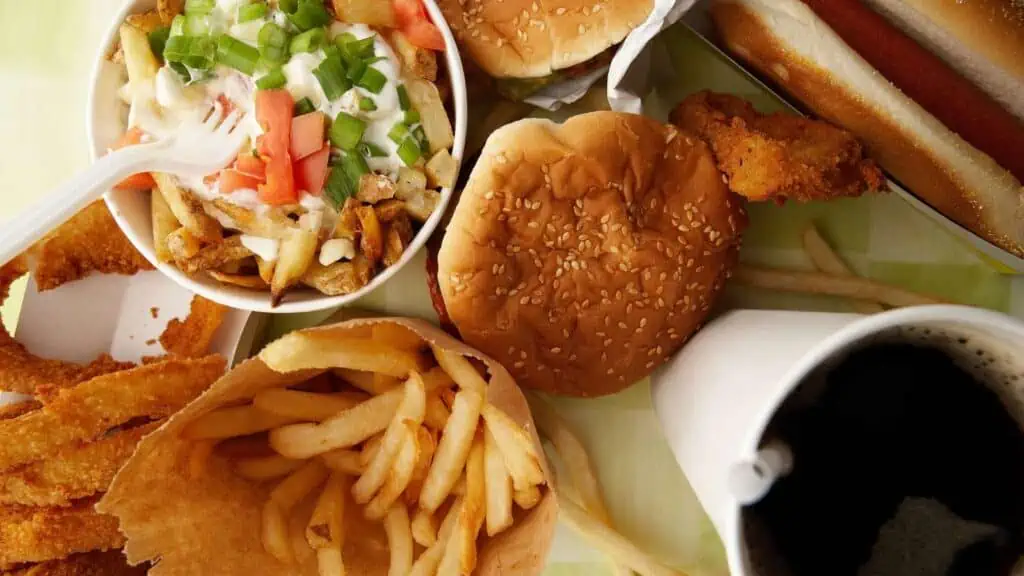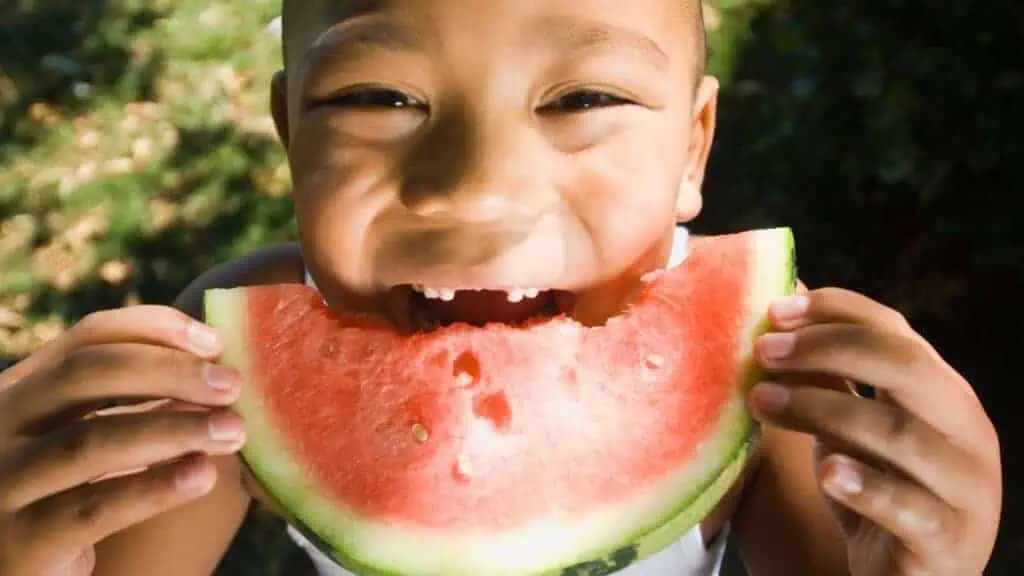13 Common Kid Foods That Are Total Junk
This post may contain affiliate links. As an Amazon Associate, I earn from qualifying purchases.
At some point, as a society, we decided that kids like bland processed foods rather than flavorful “adult” food and fresh product. Of course, some kids- just like adults- lean toward these types of foods, but the overarching assumption isn’t doing our kids any favors.
In fact, traditional kids’ foods that you often find in the frozen section, on lunch cafeteria options, and at restaurants on the kid’s menu are not always the healthiest options for children.
As a parent, I know we all must pick our battles. Sometimes, getting our kids to eat anything at all is a win. Yet, the reality is that we should be encouraging them to build good eating habits by trying new foods and eating less over-processed junk that our food industry tends to market toward parents and their kids.
Here are some of the foods you should avoid when feeding your kids regularly (aka, only in moderation). And when you just can’t get your kids to kick their favorite foods, or they won’t take no for an answer (it happens!)- I’ll give you some quick tips for boosting the nutritional value.
1. Hot Dogs

While hot dogs can potentially be part of a healthy balanced diet when eaten in moderation, many commercial brands contain nitrates (a well-known carcinogen), preservatives, and other unhealthy additives. Plus, they’re paired with high-sugar ketchup and hot dog buns that are filled to the maximum with additional preservatives (do those things ever actually mold?)
It’s best to find organic, all-natural hot dogs- or rather sausages- without nitrates and preservatives, or better yet- omit them altogether and reach for a less processed meat option.
2. Chicken Nuggets

Chicken nuggets are just one of many processed convenience foods kids love eating. But most of the time, they’re made with low-quality chicken meat and filled with artificial flavoring and unhealthy fats.
To make them more nutritious, try making them at home with high-quality chicken breast meat. Air fry or bake them and serve them with a healthy dip such as hummus or whole-fat yogurt tzatziki.
3. French Fries

Unsurprisingly, french fries are one of the most popular kid foods around. But they’re usually deep-fried in unhealthy oils like peanut oil and are served with a generous dose of salt.
If you can’t get your kids to kick the fry habit, make them at home with sweet potatoes or yellow potatoes. Air fry them with a little olive oil, herbs, and minimal added salt.
4. Macaroni & Cheese

Mac & cheese is another all-time favorite, but most of the boxed varieties (and ones found at restaurants, too) are much lower in nutritional value than homemade versions. Plus, they contain artificial colors and flavors that can be hard on a kid’s digestive system.
Make it yourself with whole wheat pasta, milk, and real cheese, or try some new recipes to get your kids to eat something slightly healthier. We like to add cauliflower because its flavor blends nicely with the other ingredients without being overpowering.
5. Peanut Butter and Jelly Sandwiches

PB&J sandwiches are a go-to lunch item, but if you’re using the traditional overly processed white bread, sugar-filled jam (jelly), and peanut butter filled with sweeteners and extra oils, they can be much less nutritious than realized.
Try switching out the white bread for whole wheat or other multigrain varieties and opt for natural, low-sugar jelly varieties, unsweetened applesauce, or fruit slices. And look for natural peanut butter with only one ingredient (peanuts) that you can often get at bulk stores.
6. Pizza

When it comes to pizza, most of the time, our kids are running for the pepperoni and cheese variety. Unfortunately, most pizzas (frozen or delivered) are often made with low-quality wheat flour, highly processed meats, and lots of salt.
While some options will be marketed as “healthier,” it’s hard to find a quality pizza these days. A way to take control over your pizza ingredients is to start making your own delicious pizza (whether your dough is from wheat or made with veggies instead). Plus, it’s a fun experiment for the kids.
7. Grilled Cheese Sandwiches

Grilled cheese sandwiches are a classic lunchtime favorite, but most of the time, they’re made with white processed bread and overprocessed cheese (or, more accurately, a “cheese product”). Plus, it’s often paired with unhealthy sides like over-processed canned soups or chips.
To boost the nutritional value, switch out the white bread for whole wheat or multigrain varieties and opt for real cheese instead of an overly processed product. If you want to take it one step further, add some veggies, like tomatoes, avocado, spinach, peppers, mushrooms, etc., into your grilled cheese.
8. Hamburgers

Hamburgers are a crowd favorite, but they’re usually made with low-quality beef and paired with processed buns (and cheese, if added). This is particularly true if they’re being picked up from a local fast food restaurant rather than cooked at home.
To make them healthier, opt for grass-fed organic beef (surprisingly, these are the same price as other frozen patties at our local Costco) and switch out white bun options for whole grain varieties or ditch the bun altogether. Serve it up with some grilled veggies, homemade fries, or a salad, and you’re good to go.
9. Hot Pockets and Pizza Rolls

Hot pockets and pizza rolls may be quick and convenient, but they’re also full of preservatives, unhealthy fats, sugar, nitrates, additives, artificial colors, and flavors. Even the “light” version they offer has too many fillers (just look at the long list of ingredients that are hard to pronounce).
Try to avoid these processed meals as much as possible. Instead, opt for simpler meals like homemade quesadillas or burritos. Use whole wheat wraps, black beans, veggies, and some cheese for a healthier version of this classic lunchtime favorite.
Related read: 10 Easy Food Swaps
10. Lunchables

Lunchables are marketed as convenient and fun, but they’re traditionally filled with processed meats and cheeses that don’t even try to look natural. Then, they’re paired with fake “juice” and a junky sweet treat. Overall, they definitely aren’t doing your kids any favors in the nutritional department.
Instead of buying pre-made Lunchables, try making your own version with whole grain crackers, natural peanut butter or cheese, and some fruit or veggies. It’ll be just as convenient (if not more so) and much healthier for your kids.
11. Microwavable Meals/Frozen Dinners

Microwavable meals and frozen dinners may be convenient for busy parents, but they often come with a laundry list of ingredients that are far from natural. Plus, they’re usually loaded with sodium, artificial additives, preservatives, and unhealthy fats.
To save time in the kitchen without compromising nutrition, try meal-prepping healthy dishes ahead of time and then freezing them in individual portions. That way, you can just pull out a healthy meal to heat up in the microwave on those days when you don’t have time to cook. You could also make items like homemade burritos that freeze well and are easy for your kids to grab and go.
12. Fast Food

Drive-thrus and fast-food joints may be the first thing that comes to mind when you need a quick meal, but there’s a reason they’re “fast.” To stay shelf stable and easy to cook, they are modified and injected with all kinds of things that our bodies are better off without.
If you really need something on the go, try to look for healthier options on the menu (like grilled chicken instead of fried, for example). We have a few favorites in town that prep their food fresh daily, which makes me feel better about what my kids are eating. Or, better yet, bring your own food from home so you know exactly what you’re eating while on the go.
Related read: Don’t Be Afraid of These Healthy Fats
13. Cereal

Cereal is often marketed as a healthy breakfast option, but many varieties are actually loaded with sugar and artificial ingredients. Even the “healthy” options aren’t always that great for you (I’m looking at you, granola)- with sugar being one of the top ingredients in almost every box in the store aisle.
Instead of feeding your kids cereal for breakfast, try giving them oatmeal with nuts and fruit or eggs with whole-grain toast. These are much better options nutritionally and will fuel them up for their day. If your kids love cereal (like mine), you can also look for cereal with fewer ingredients, higher protein, and lower sugar content to make sure your kids are getting the best nutrition possible.
Don’t Stress; Just Do Your Best

These are just a few of the foods you should avoid when feeding your kids regularly. Although it may seem like an uphill battle at times, making small changes can help encourage healthy eating habits that will benefit your family in the long run. So don’t stress- just do your best to provide nutritious, well-rounded meals for your kids.
As a mom and healthy habits advocate, I want to ensure you know that your kids can still eat all of these foods. The key is to veer away from the mainstream “easy” options that tend to add extra flavors and preservatives (excepting moderation, if you must).
If you can afford it, you may find some healthy alternatives that are still “easy” (frozen, ready-made, etc.). But ultimately, if you can make some of your favorites at home, this is where the true win-win comes in. With cooking at home, you can typically make large meals (with leftovers) that keep you in control of additives and can help you get creative with nutritional add-ons. Plus, it’s usually much more cost-efficient too!
More Articles from Mom Blog Life

16 Celebrity Moms Who Stepped Away from Fame to Raise Their Kids- And Don’t Regret It for One Minute
These famous moms decided staying home with their kids was where they wanted to be.
15 Baby Names That Make People Cringe

What were parents thinking when they named their kids these names?
15 Baby Names That Make People Cringe
10 Things That Make You Look Ridiculous, No Matter Who You Are

We are all human. Whether you’re rich, poor, tall, short, skinny, or fat, there are some things that every single person on the planet looks ridiculous doing.
10 Things That Make You Look Ridiculous, No Matter Who You Are
13 Things Men Are Sick of Hearing from Their Wives (and Society)

Men are constantly bombarded with messages from their wives and society that can leave them frustrated, misunderstood, and exhausted.
13 Things Men Are Sick of Hearing from Their Wives (and Society)
20 Embarrassing Birth Moments That’ll Make You Laugh Until You Cry

Moms of Reddit share their most hilarious moments while birthing their children. Get ready to laugh!
20 Embarrassing Birth Moments That’ll Make You Laugh Until You Cry







